Trend-following is a major trading style that is used by a large number of traders out there. Why is trend-following so popular? Because it works. Markets like to trend, and measuring the strength of a trend allows traders to find high-probability trade setups in trending markets.
In the following lines, we’ll explain some of the best trend and reversal indicators for Forex trading, spanning from price-action techniques to actual technical indicators.
-
Measuring trend projections
One of the most important tools that a trader has at his disposal when trading trends is the measurement of trend projections.
Every trend is formed the same way. In an uptrend, the price forms consecutive higher highs and higher lows, and in a downtrend, the price forms consecutive lower highs and lower lows. However, this alone doesn’t tell us much about the strength of the underlying trend. For this, we are measuring the trend projections.
Trend projections are simply the distance between a fresh higher high and the top of the previous higher high. The longer the projection of the new impulse wave, the stronger is the trend. Simply put, when buyers outnumber sellers and buying pressure grows at a high pace, the projection will be longer and the trend stronger.
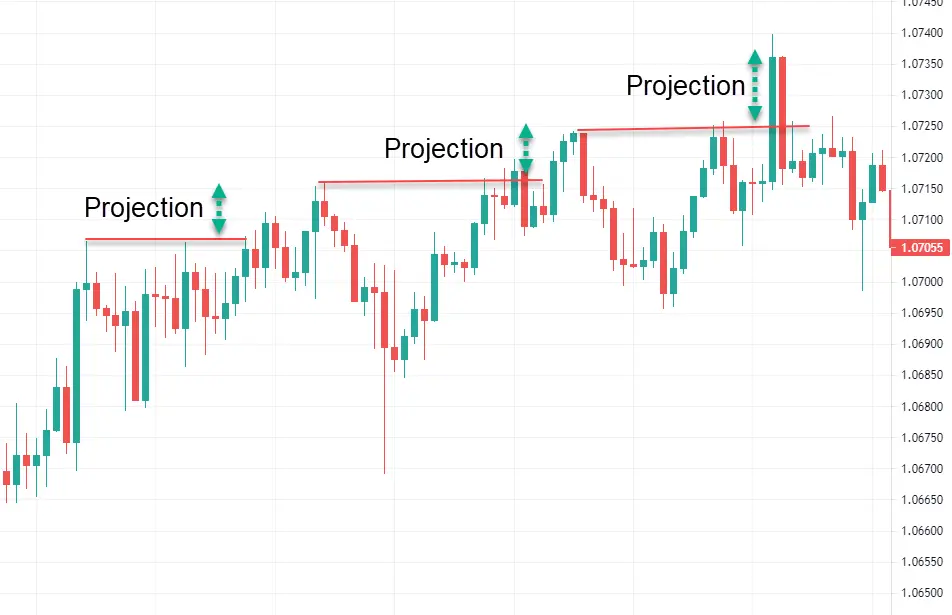
The opposite is true when buyers are relatively weak. In this case, the projection will be shorter, and the trend will be weaker. If you’re a trend-following trader, you would like to avoid entering into the trend when projections are short.
While we used the example of an uptrend here, the same is true for downtrends as well, but in that case, selling pressure is stronger than buying pressure.
-
Measuring trend corrections
There is another very useful tool in measuring the strength of the trend besides projections, which is measuring trend corrections. While long projections indicate a strong underlying trend, the opposite is true for corrections. Deep corrections signal that a trend is weak, while shallow corrections signal that a trend is strong.
Deep corrections form when a large number of market participants lock in their profits or when sellers anticipate that the current price is too high and therefore push it down.
On the other hand, shallow corrections form when selling pressure is relatively weak compared to buying pressure, and buyers use any opportunity to enter into the market, even on the slightest pullback. The length of the correction is measured from the top of an impulse wave to the bottom of the corrective wave.
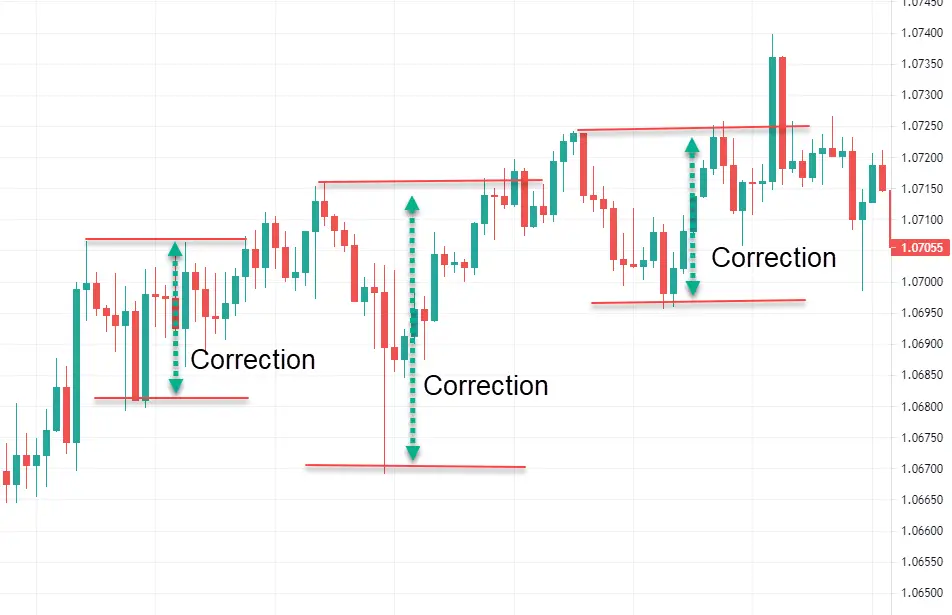
The same is true for downtrends as well, only that in that case buyers outperform sellers during periods of pullbacks. But, the underlying concept is the same in both downtrends and uptrends: Deep corrections signal weakness and shallow corrections signal strength.
-
Anticipating reversals
When measuring the strength of a trend, traders can take advantage of short projections and deep corrections to anticipate a potential trend reversal. Since short projections mean that buying pressure is losing steam and deep corrections signal that buyers either lock in their profits or sellers feel that the current price is too high (in uptrends), traders can look out for those clues as they signal a high probability of a trend reversal.
In the images above, we’ve shown how projections and corrections look like in a trend. Notice that in both examples we have a quite weak trend, as projections are rather short and corrections deep. This means that the market is ready for a reversal. Here is what happened next in the exact same chart.
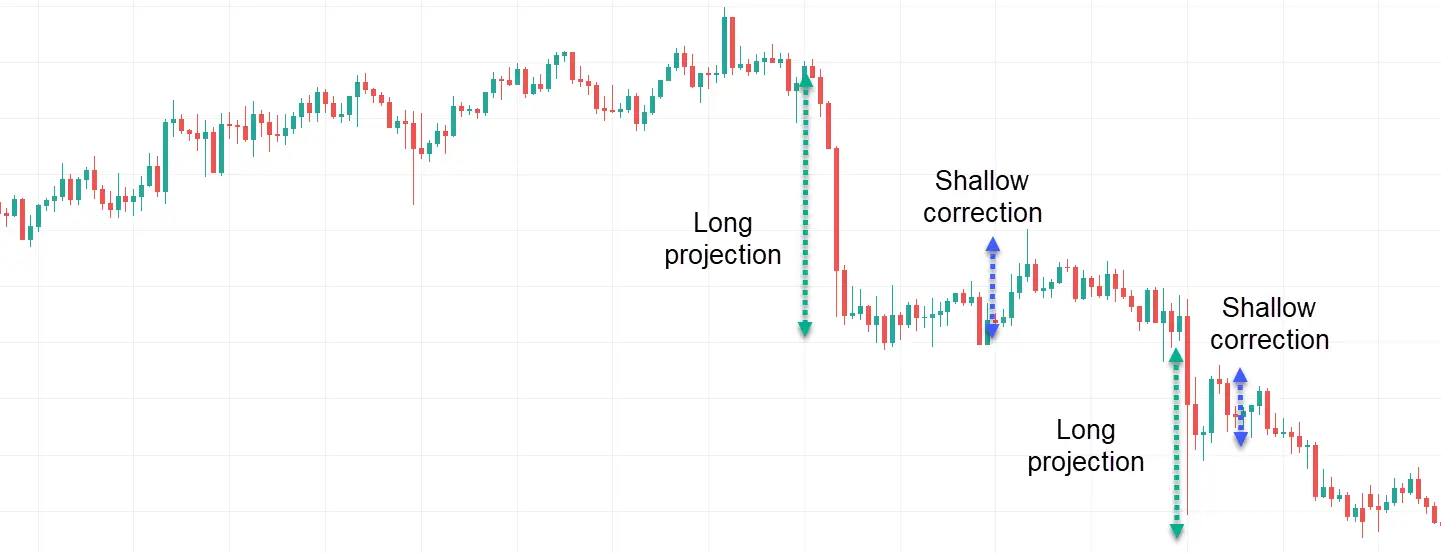
The market reversed strongly with very long projections and shallow corrections.
-
Using the ADX indicator
Another way to measure the strength of a trend is to use the ADX indicator. The ADX, or Average Directional Movement Index, consists of three lines: the ADX line, the DI+ line, and the DI- line.
The ADX line measures the power of the trend, with readings above 25 generally signaling that a market is trending. Readings of 50 to 70 signal a strong trend, and readings above 70 signal a very strong trend. Notice that the ADX line returns the same values for both uptrends and downtrends, as the ADX line is used to measure the strength and not the direction of a trend.
To get the direction of a trend, we can use the DI+ and DI- lines. When the DI+ line lies above the DI- line and the ADX line has a reading of 25 or higher, this means that the market is forming an uptrend. However, when the DI+ line lies below the DI- line, but the ADX stays at 25 or higher, this signals that the market is turning into a downtrend.
Here is how the ADX indicator looks like when applied to a chart.
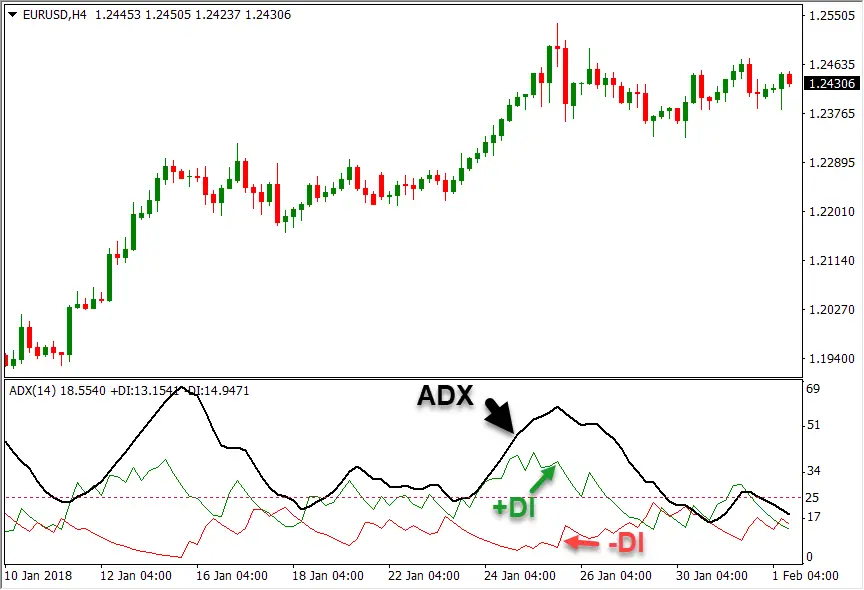
-
Using Moving Averages
Last but not least, traders can also use moving averages to determine the strength of a trend or to anticipate potential trend reversals. Moving averages are technical indicators that take the closing prices of a pre-specified number of periods and plot the average price on the chart.
Moving averages are very popular among trend-following traders, especially the 21-day, 50-day, 100-day, and 200-day MAs. Those lines often act as important support or resistance levels on the chart, with a break below the 200-day MA, for example, often signaling a trend reversal.
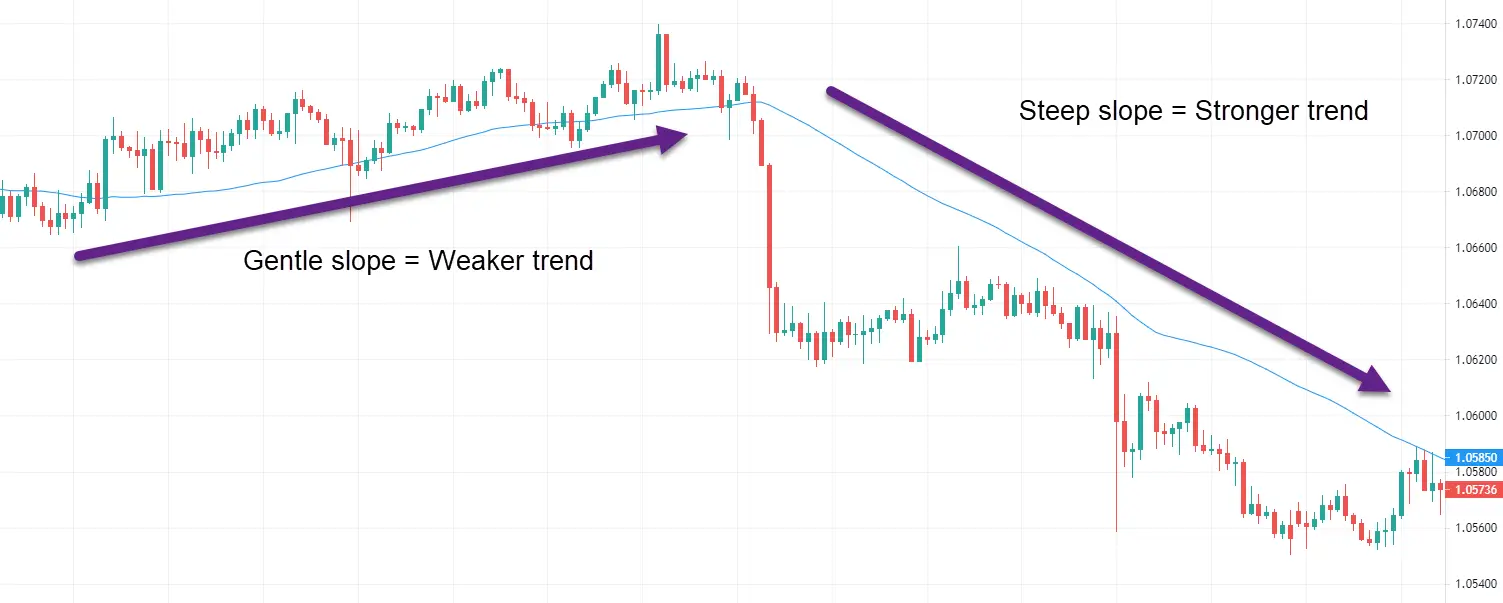
The slope of MAs can also be used to identify the direction and strength of a trend. The steeper the moving average, the stronger the trend.
Final Words
Measuring trends is a very important job of every trend-following trader. If a strong trend forms in front of your eyes, you have many more opportunities to enter the trend at pullbacks and to find high-probability trade setups.
In this article, we’ve covered how to measure the strength of a trend and how to anticipate trend reversals by measuring the length of projections, the depth of corrections, reading the ADX indicator, and assessing the slope of moving averages. It’s your turn now to apply all the tools in your daily trading.

